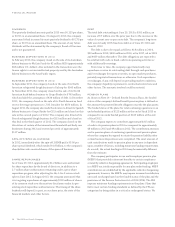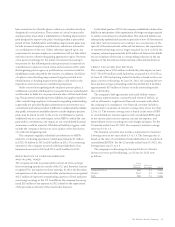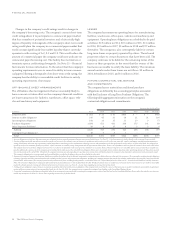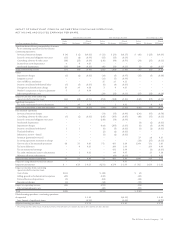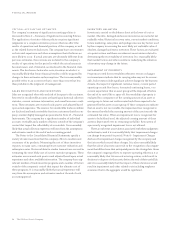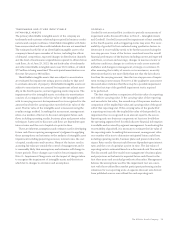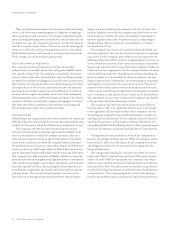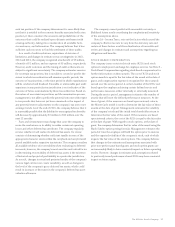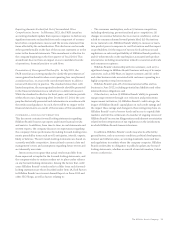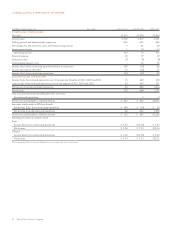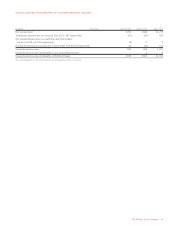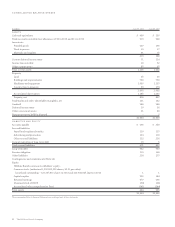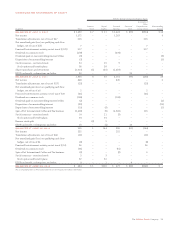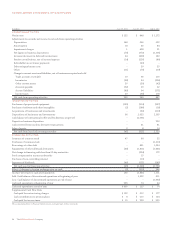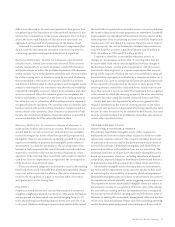Sara Lee 2013 Annual Report Download - page 29
Download and view the complete annual report
Please find page 29 of the 2013 Sara Lee annual report below. You can navigate through the pages in the report by either clicking on the pages listed below, or by using the keyword search tool below to find specific information within the annual report.The Hillshire Brands Company 27
each tax position. If the company determines it is more likely than
not that it is entitled to the economic benefits associated with a tax
position, it then considers the amounts and probabilities of the
outcomes that could be realized upon ultimate settlement with
a taxing authority, taking into consideration all available facts,
circumstances, and information. The company believes that it has
sufficient cash resources to fund the settlement of these audits.
As a result of audit resolutions, expirations of statutes of
limitations, and changes in estimate on tax contingencies in 2013,
2012 and 2011, the company recognized a tax benefit of $5 million,
a benefit of $1 million, and an expense of $3 million, respectively.
However, audit outcomes and the timing of audit settlements are
subject to significant uncertainty. The company estimates reserves
for uncertain tax positions, but is not able to control or predict the
extent to which tax authorities will examine specific periods, the
outcome of examinations, or the time period in which examinations
will be conducted and finalized. Favorable or unfavorable past audit
experience in any particular tax jurisdiction is not indicative of the
outcome of future examinations by those tax authorities. Based on
the nature of uncertain tax positions and the examination process,
management is not able to predict the potential outcome with respect
to tax periods that have not yet been examined or the impact of
any potential reserve adjustments on the company’s tax rate or net
earnings trends. As of the end of 2013, the company believes that it
is reasonably possible that the liability for unrecognized tax benefits
will decrease by approximately $5 million to $30 million over the
next 12 months.
• Facts and circumstances may change that cause the company to
revise the conclusions on its ability to realize certain net operating
losses and other deferred tax attributes. The company regularly
reviews whether it will realize its deferred tax assets. Its review
consists of determining whether sufficient taxable income of the
appropriate character exists within the carryback and carryforward
period available under respective tax statutes. The company considers
all available evidence of recoverability when evaluating its deferred
tax assets; however, the company’s most sensitive and critical factor
in determining recoverability of deferred tax assets is the existence
of historical and projected profitability in a particular jurisdiction.
As a result, changes in actual and projected results of the company’s
various legal entities can create variability, as well as changes in
the level of the company’s gross deferred tax assets, which could
result in increases or decreases in the company’s deferred tax asset
valuation allowance.
The company cannot predict with reasonable certainty or
likelihood future results considering the complexity and sensitivity
of the assumptions above.
Note 18 – Income Taxes, sets out the factors which caused the
company’s effective tax rate to vary from the statutory rate and
certain of these factors result from finalization of tax audits and
review and changes in estimates and assumptions regarding tax
obligations and benefits.
STOCK BASED COMPENSATION
The company issues restricted stock units (RSUs) and stock
options to employees in exchange for employee services. See Note 9 –
Stock-Based Compensation regarding stock-based compensation for
further information on these awards. The cost of RSUs and stock
option awards is equal to the fair value of the award at the date of
grant, and compensation expense is recognized for those awards
earned over the service period. A certain number of the RSUs vest
based upon the employee achieving certain defined service and
performance measures, either internally or externally measured.
During the service period, management estimates the number of
awards that will meet the defined performance measures. At the
time of grant, if the measures are based upon external criteria,
the Monte Carlo model is used to determine the fair value of these
awards at the date of grant. Management estimates the volatility
of the company’s stock and the initial total shareholder return to
determine the fair value of the award. If the measures are based
upon internal criteria, the cost of the RSUs is equal to the fair value
at the date of grant. With regard to stock options, at the date of
grant, the company determines the fair value of the award using the
Black-Scholes option pricing formula. Management estimates the
period of time the employee will hold the option prior to exercise
and the expected volatility of the company’s stock, each of which
impacts the fair value of the stock options. The company believes
that changes in the estimates and assumptions associated with
prior non-performance based grants and stock option grants are
not reasonably likely to have a material impact on future operating
results. However, changes in estimates and assumptions related
to previously issued performance based RSUs may have a material
impact on future equity.



